New Patents Shed Light on How Kawi Plans On Expanding Hybrid System to Other Models
When Kawasaki made announcements at last year’s EICMA stating that three new electric bikes would be in their lineup by next year (making the total count of promised alternative or hybrid machines now set to 10), we were intrigued – after all, motorcycle brands appear to either swing the route of electric or hybrid when it comes to clean, green alternative fuel options…and here Kawi is doing both, having already made advances on a hybrid motorcycle model that will eventually be the two-wheeled representation of what the automotive industry is doing in phasing out fully fossil-fuel machines for the masses.
Whilst keeping their eggs in multiple baskets, we’re told by CycleWorld that Kawasaki’s hybrid project is now that much closer to production – and now we’ve a bit of a better idea on how Kawi’s going to be able to punt out 10 alternative-energy bikes by next year.
“The chances of developing 10 entirely new hybrid or electric bikes from scratch before a deadline that’s less than three years from now are slim – particularly given uncertainties over the potential sales success of such machines,” admits the report.
“However, car companies have shown that it’s relatively easy to introduce hybrid versions of existing, conventional models, vastly reducing the number of unique components they need while simultaneously making them feel more familiar for their customers.”
“Kawasaki also appears to be taking the same route.”
Included in the newly published patents are a few details – namely, that the hybrid model will host a parallel-twin engine borrowed from a Ninja 400/Z400, with a small, cost-friendly, air-cooled lithium-ion battery squeezed under the seat.
Naturally, to accommodate the fact that the battery will need airflow, the fairings will have ducts that send the incoming current “from the leading edge of the lower fairing, around the combustion engine, and into the under-seat battery container. Exhaust ducts in the back of the battery tray allow the air to escape, along with the heat from the battery pack.”
The second patent shows an electronic shift system, along with a quickshifter – and this could be a very clever answer to the positioning of the electric motor.
“Bar-mounted switches can be used to change ratio rather than the foot pedal, also introducing the possibility of an automatic mode to help make the switch between gas and electric power seamless,” continues the report.
“The electric motor’s position means the system could be used on virtually any bike with a conventional transverse combustion engine.”
What do you think? Drop a comment below – you know we love hearing from you.
For other news, be sure to subscribe to our newsletter, where our main man Cameron Martel curates the best of the best, twice a week, just for you – and as always, stay safe on the twisties.

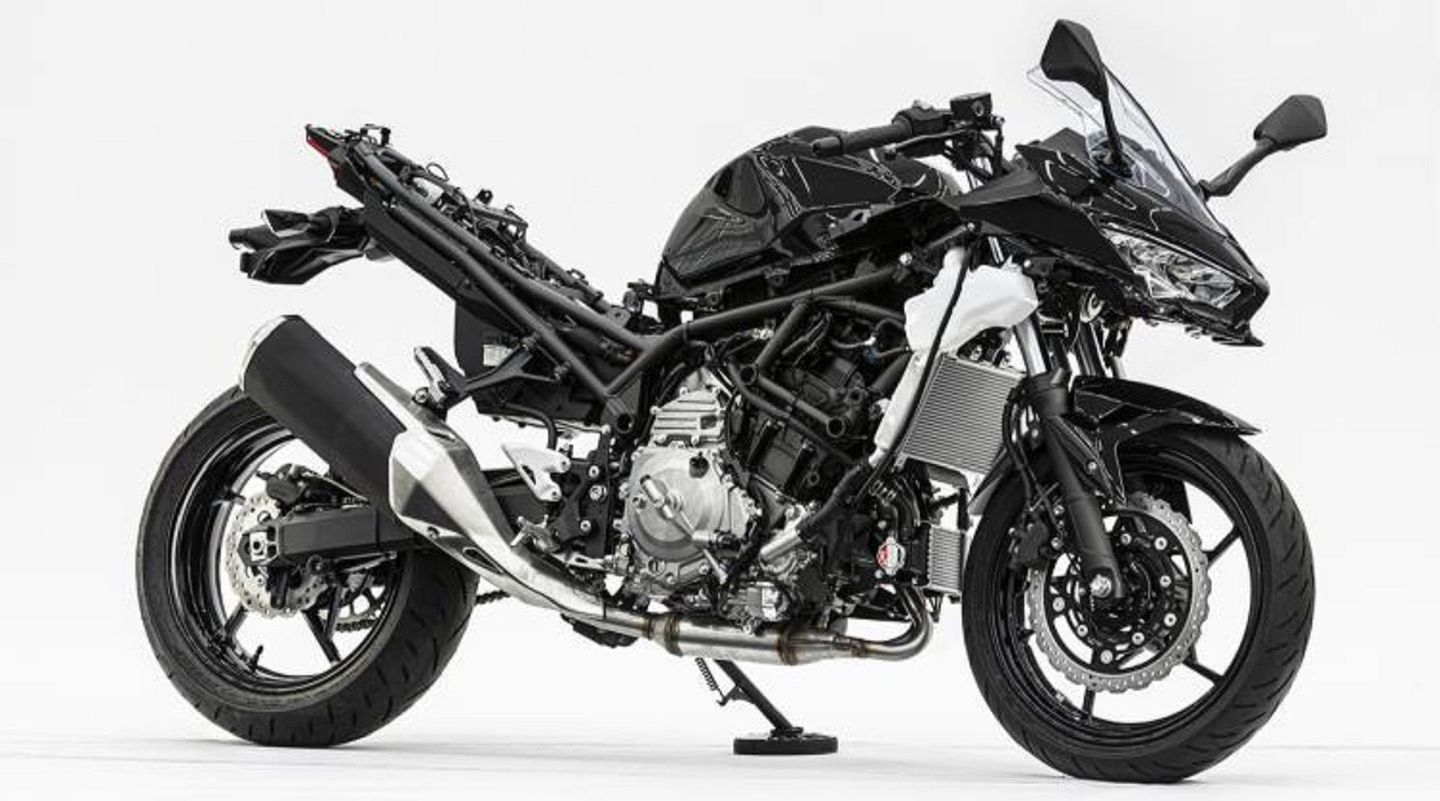

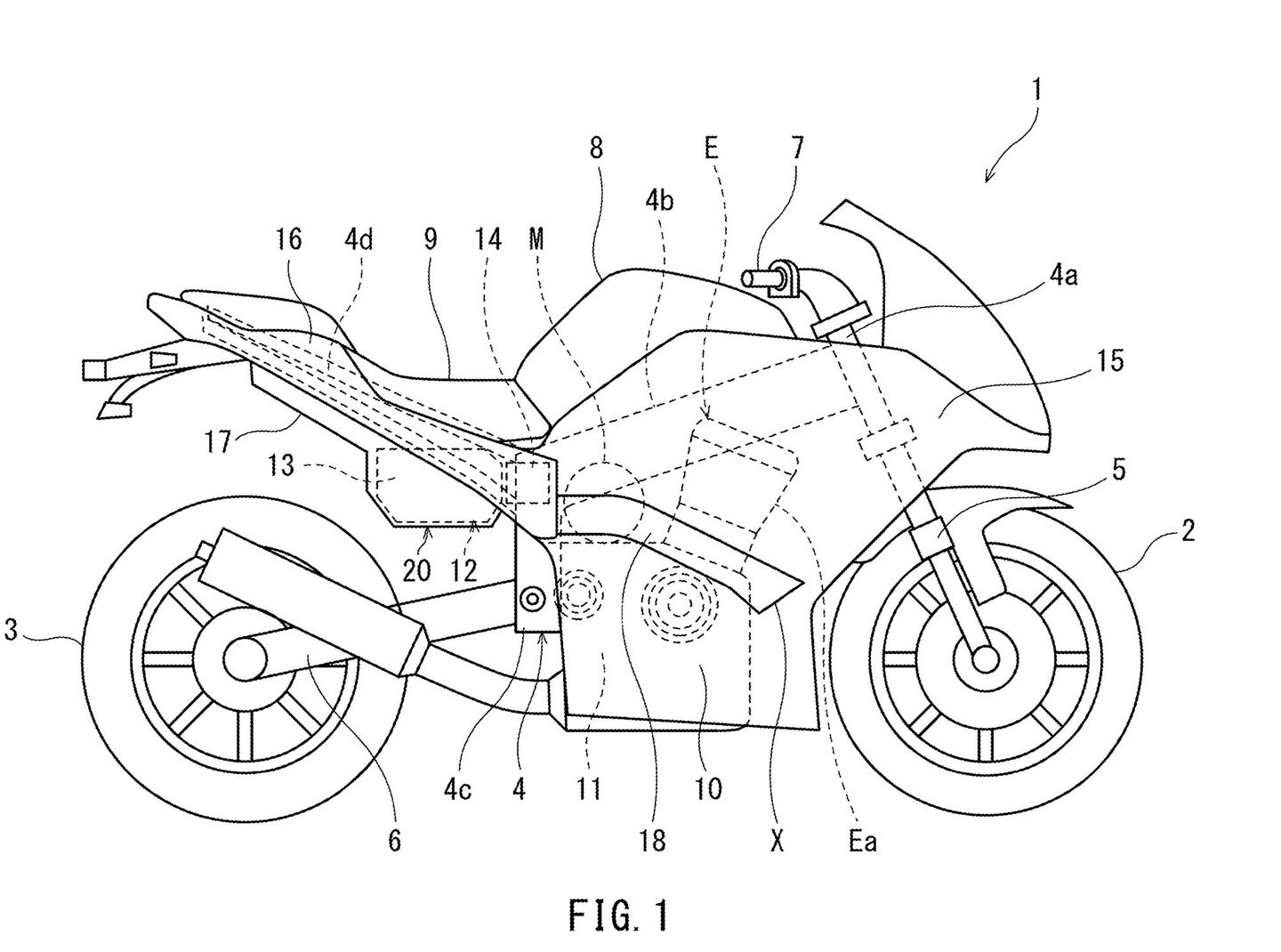
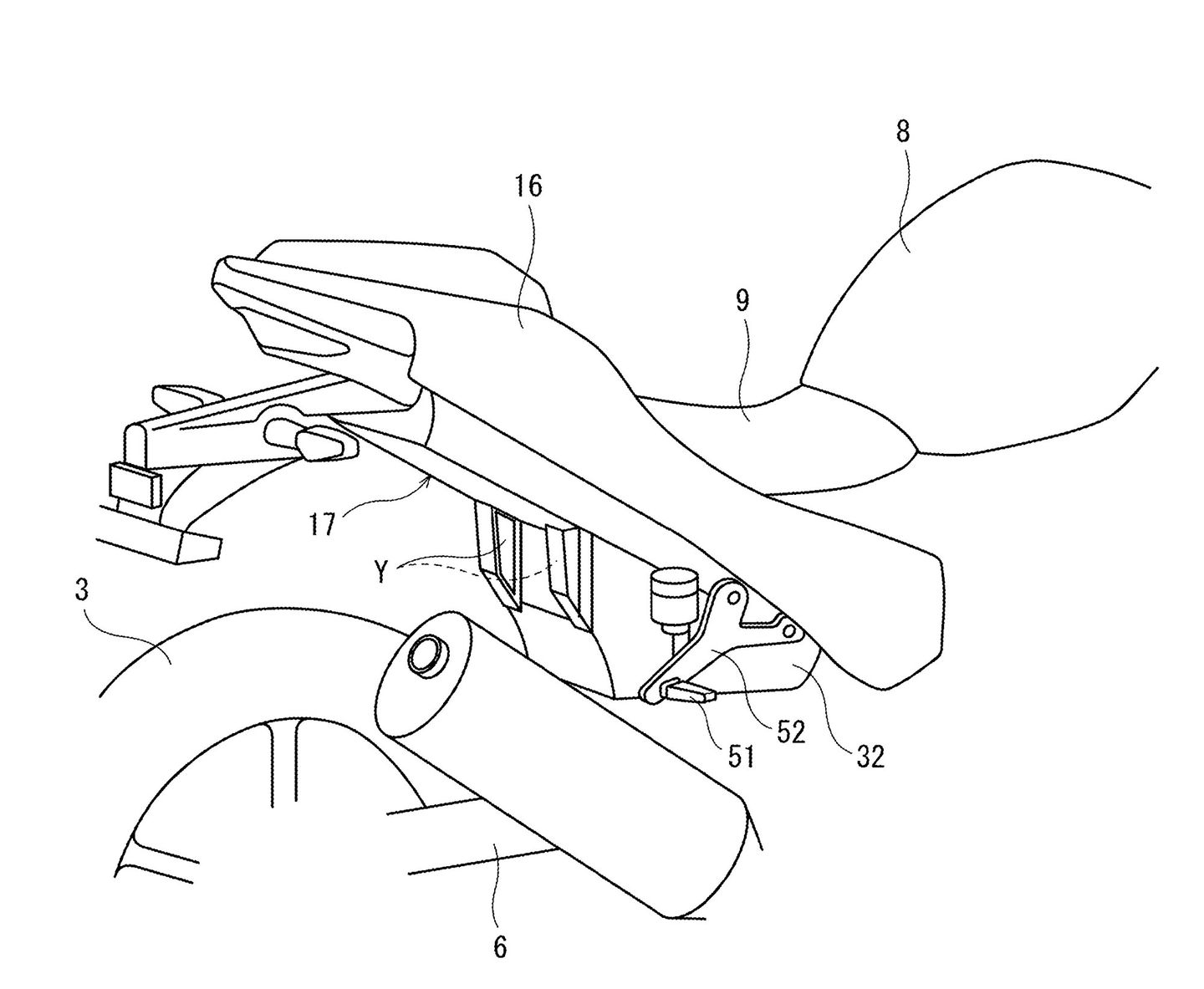
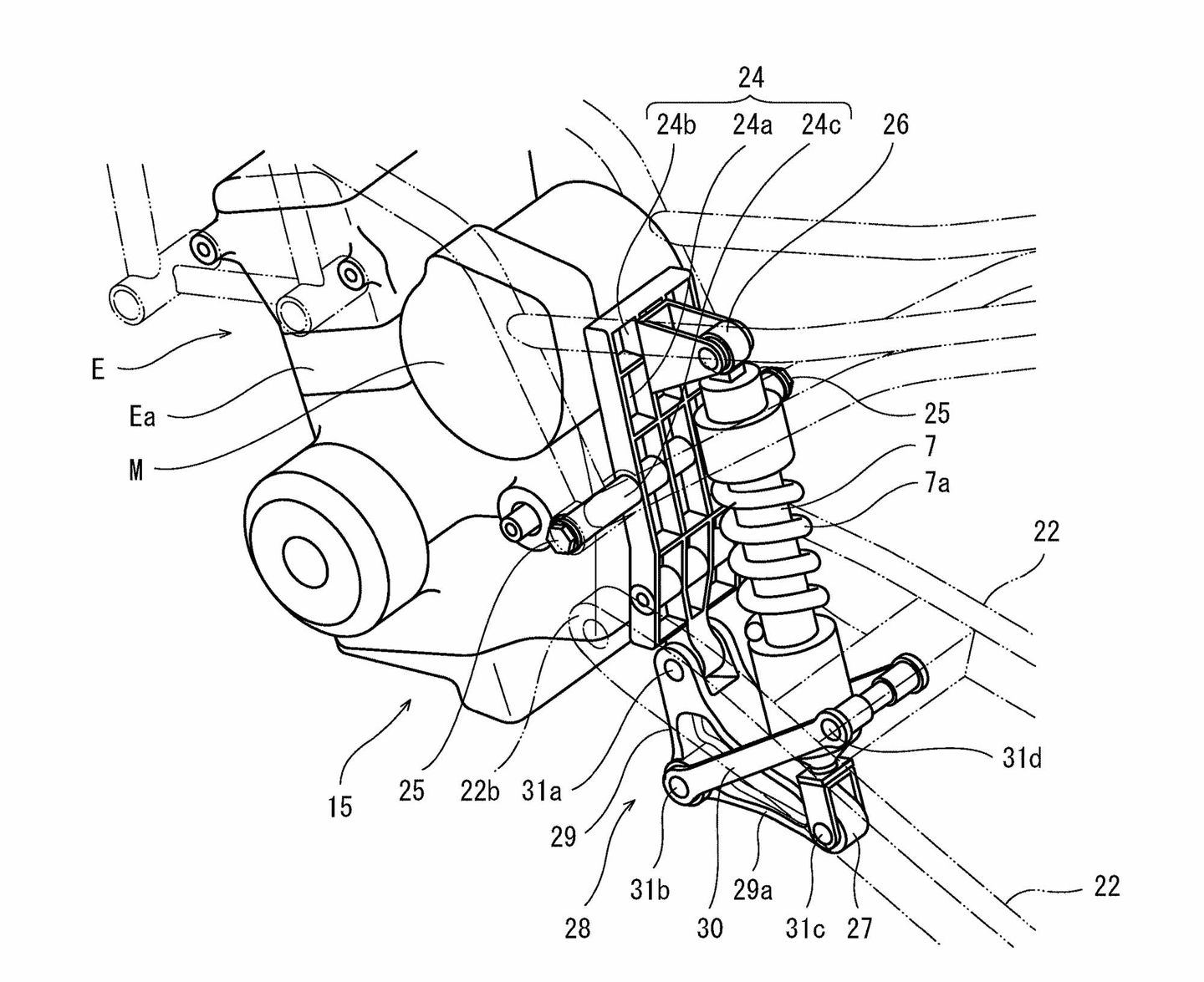
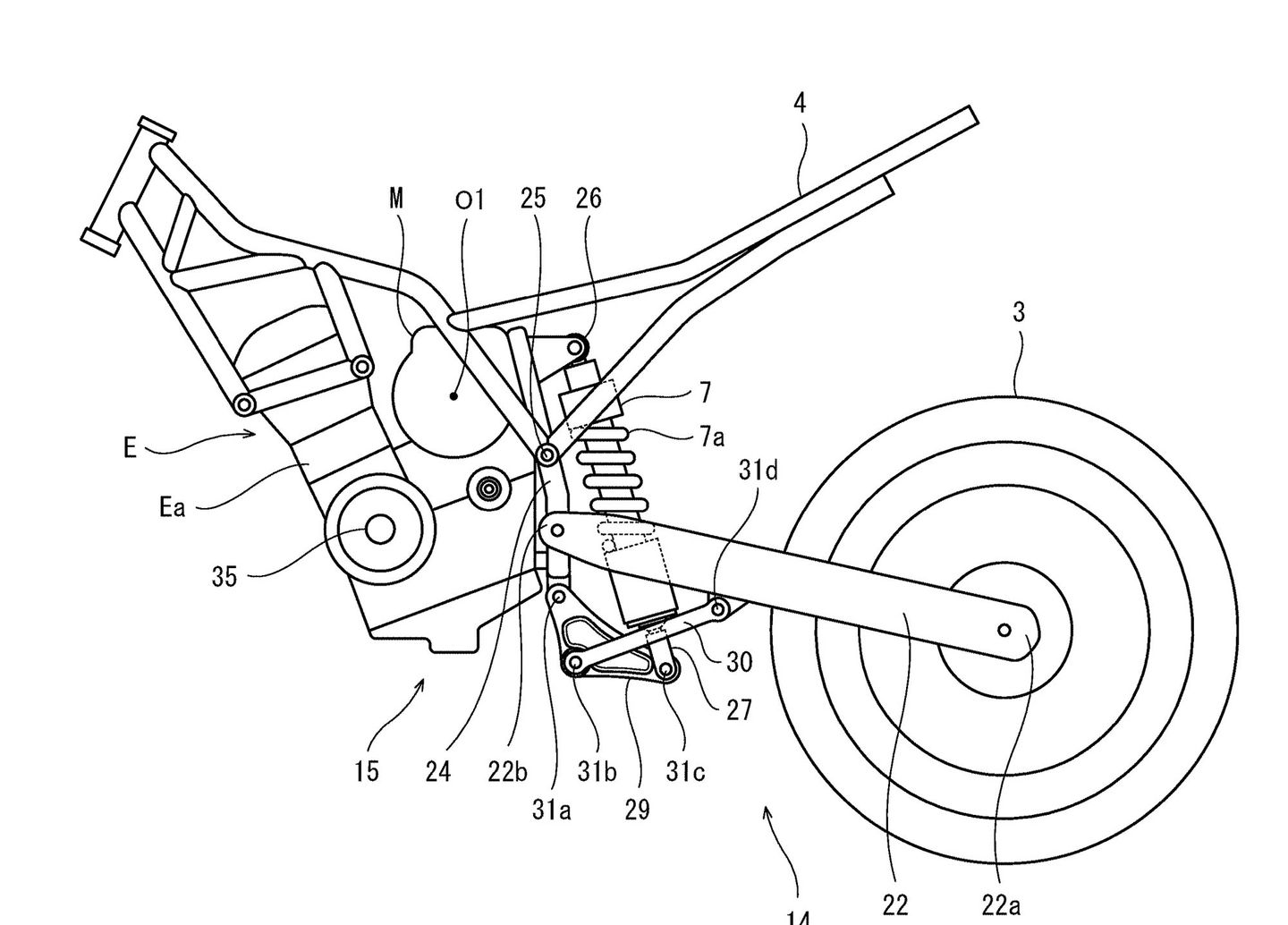
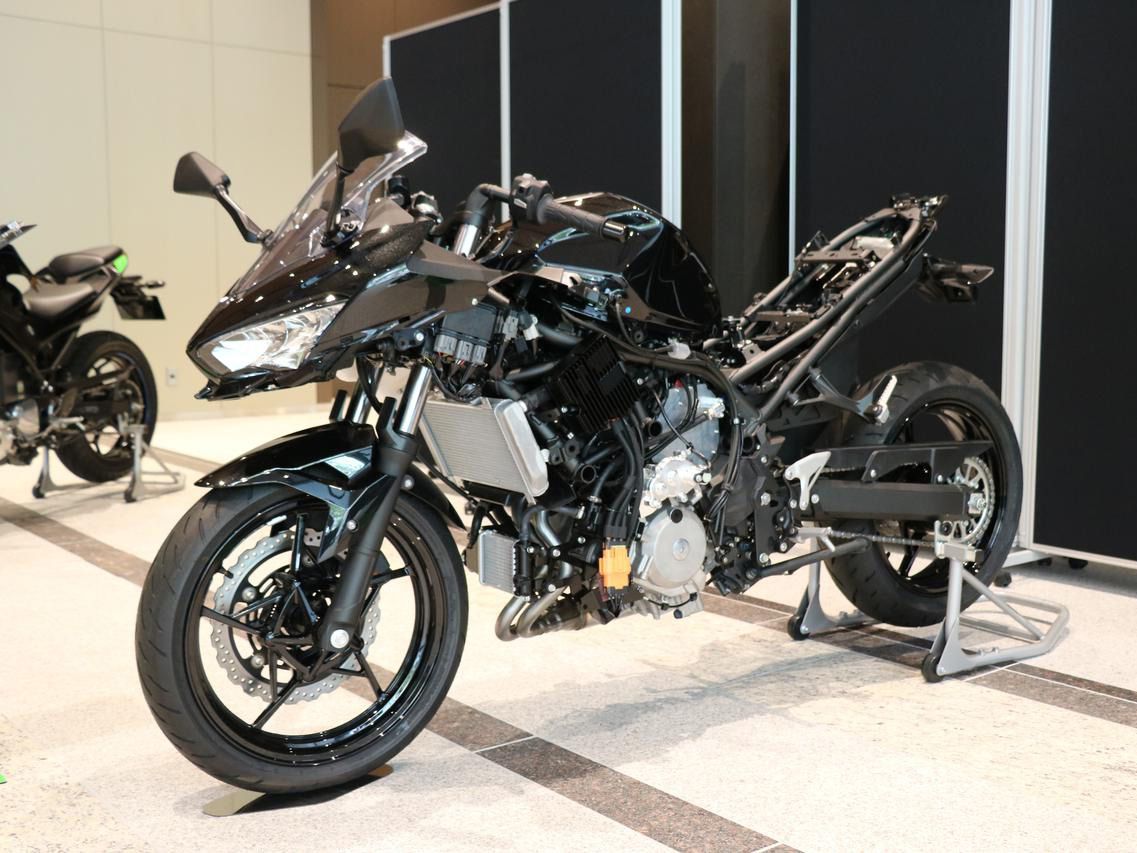

Interesting. I wonder about prices for hybrids
I drive a Rav4 hybrid, and would not go back to a standard engine car. Can not wait for a hybrid bike. I will be first in line Kawasaki. Need a test rider, I am available.